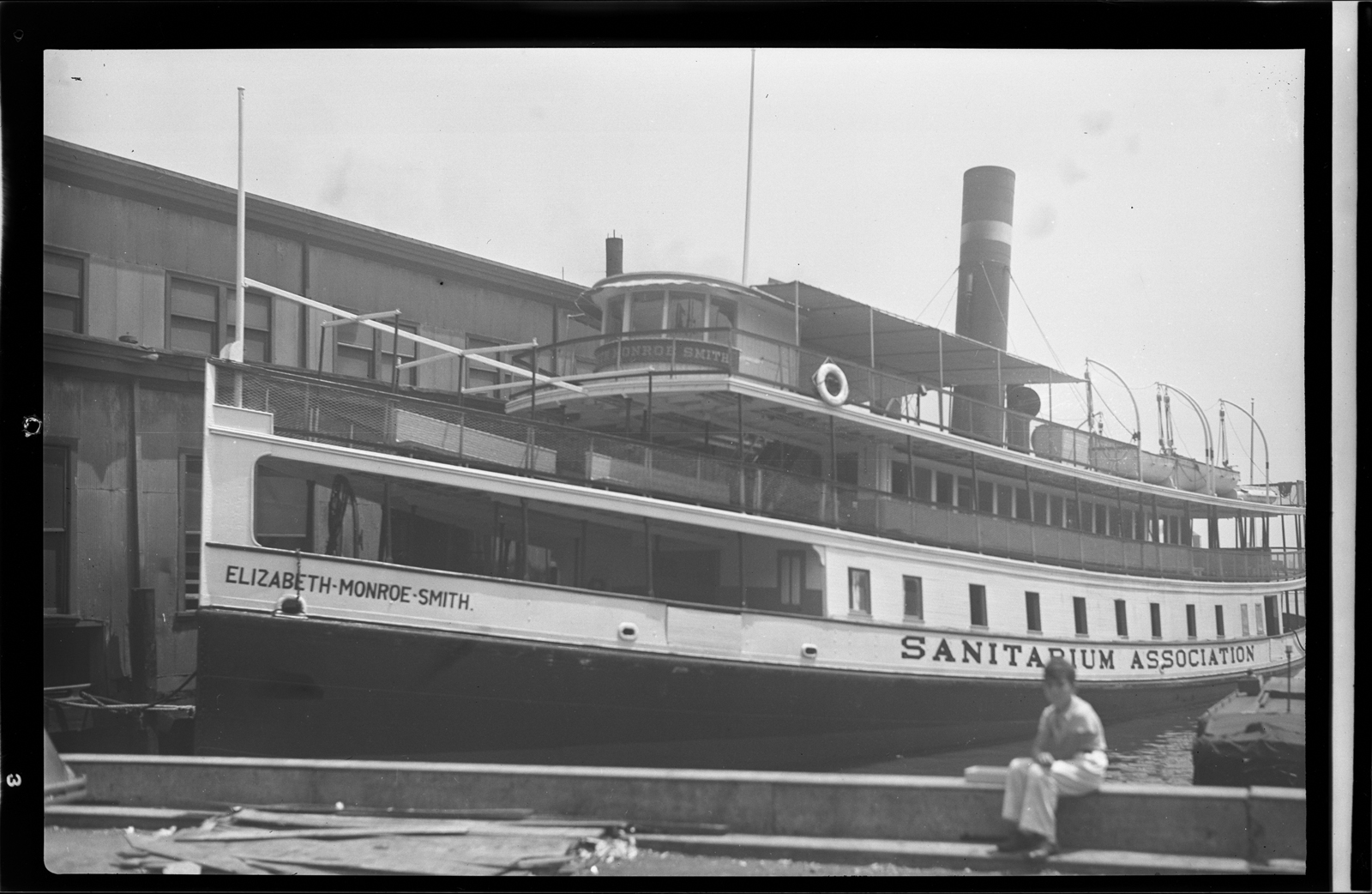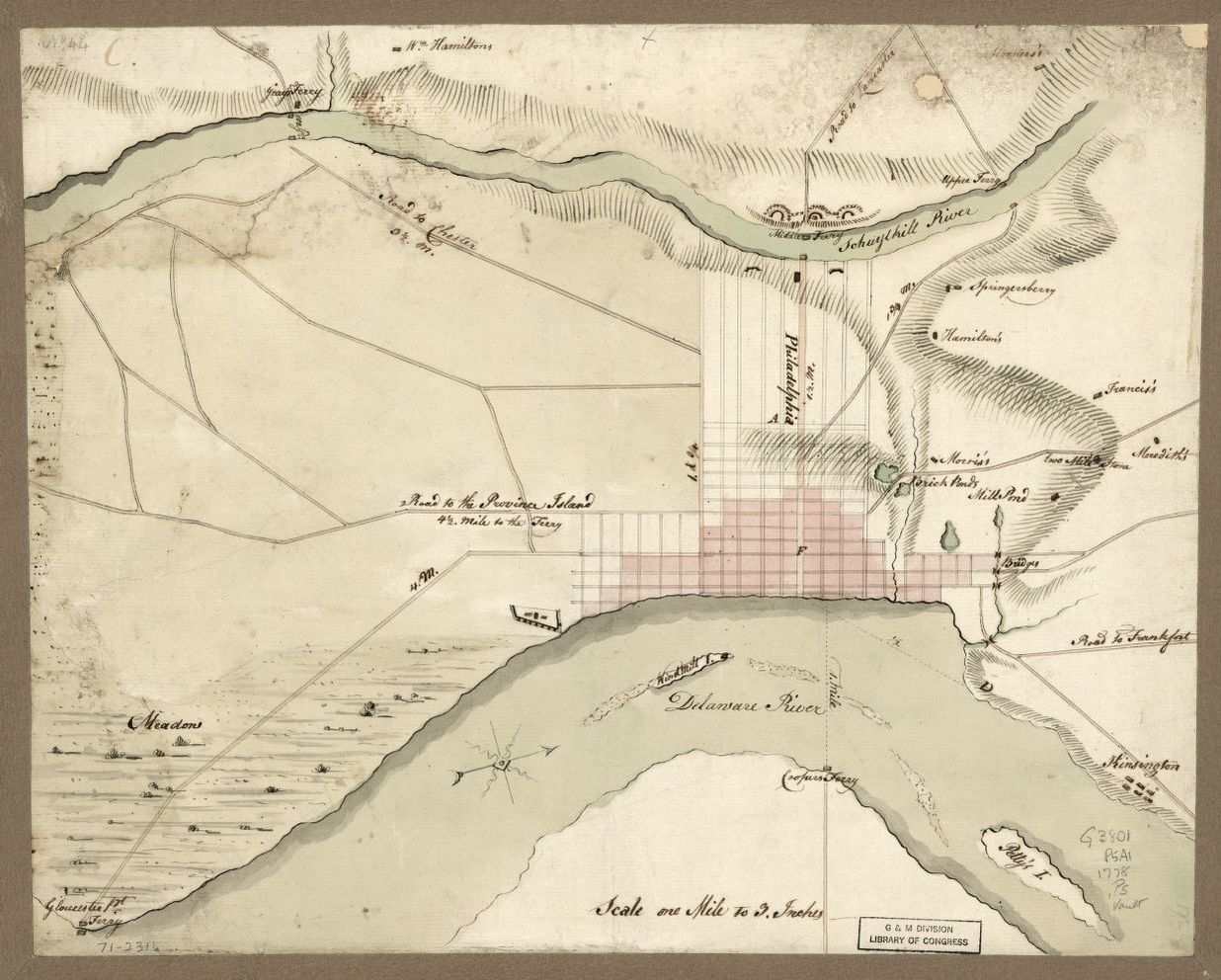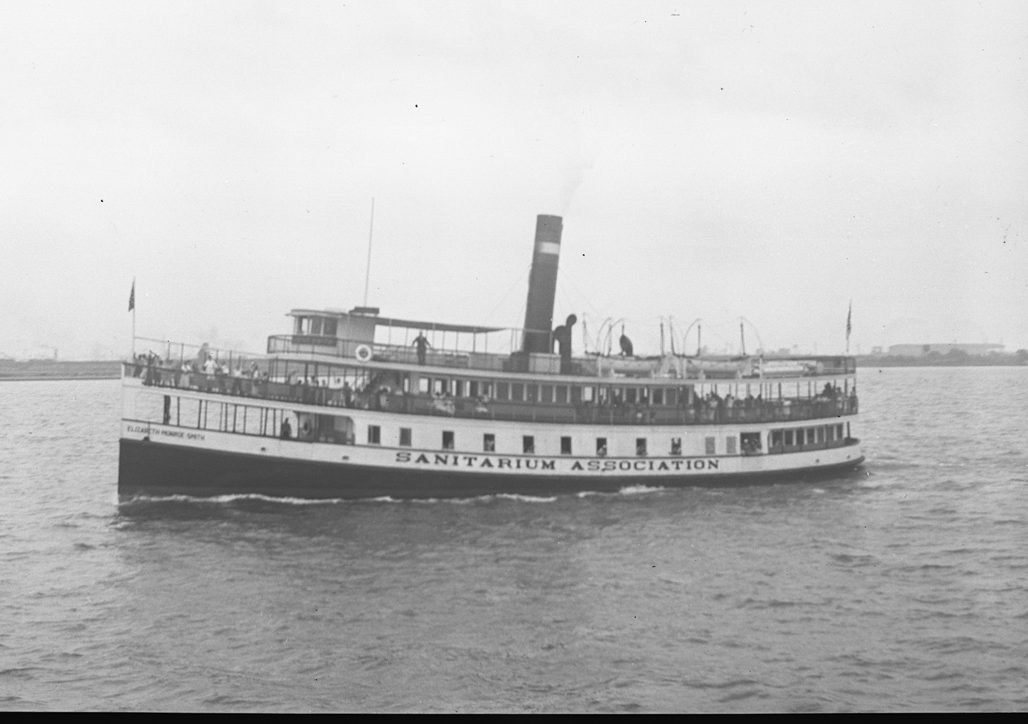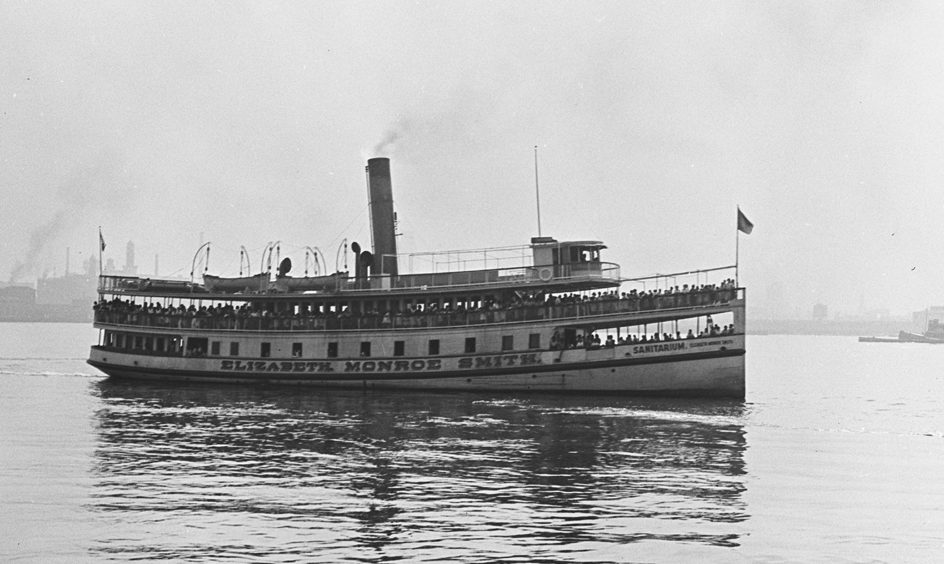
Updating records for our online catalog (catalogs.marinersmuseum.org, in case you’d like to know), I came across a curious image of an excursion steamer and a rather heartwarming story I’d like to share with you. It’s the story of how a city in the midst of the tuberculosis pandemic and periodic cholera outbreaks, came to help its poorest inner-city kids. It’s the story of a place called Soupy Island. The steamer is the Elizabeth Monroe Smith.
As you know, American cities in the 19th century and into the 20th century were often great places for communicable diseases to break out. The density of the population, the lack of medicines, the influx of immigrants from other places, all made the likelihood of outbreaks to be much higher than out in the countryside. Philadelphia was no exception to this.
Now in the city there was a wealthy man named John F. Smith who made his fortune in typography. His stated goal was to give a good deal of his money away before he died, so he could see the good work it did. One of the recipients of his largesse was Philadelphia’s Sanitarium Association. In 1877, they used some of his money to set up a hospital and playground on an island in the middle of the Delaware River named Windmill Island. They wanted a place, away from the crowded city, where the city’s neediest children and those who were sick with tuberculosis could go and get fresh air, play, and get medical treatment if they needed it.

The Association also wanted to feed these children. So the cheapest and easiest meal they could make with donated food was homemade soup, crackers and milk.
To get to the island, which was located between Philly and Camden, NJ across the river, the Association also had built excursion steamboats. Their first was the John F. Smith, to be followed in 1888 by a second steamer Elizabeth Monroe Smith, named for Smith’s wife. It took kids and their moms to the island hospital and back. The kids, associating the island with the soup they got to eat, called it Soupy Island.


The river channels on the Delaware had to be widened and deepened between 1893 and 1897, so the island was dug out and the river was dredged. But the Association built a new place down river on the riverbank in Gloucester County, NJ, with a bigger playground, a hospital, and of course, a place for kids to eat. And they named it Soupy Island.
To this day, Soupy Island still exists as a playground and place for needy kids to eat and play for free. And yes, they still feed them soup! The steamers are long gone, as is the hospital, whose basement was made into a swimming pool. Here is a great story about the place by Caitlyn Stupin, to whom I am indebted for her great research: https://www.nj.com/gloucester-county/2017/07/the_strange_story_of_soupy_island_njs_former_sanit.html
To me, with this act of kindness to the poorest among them, Philadelphia has earned its nickname, the City of Brotherly Love! Let’s all do our best to follow their great example during our current pandemic!